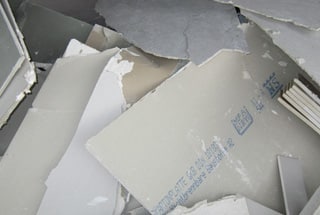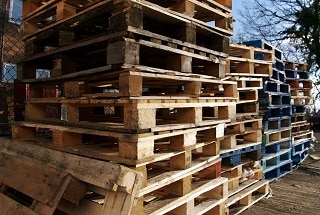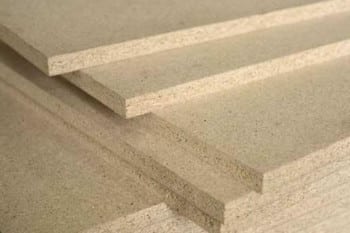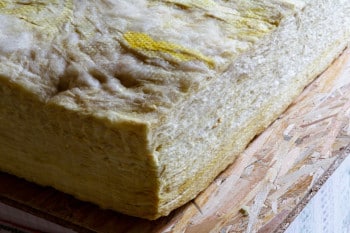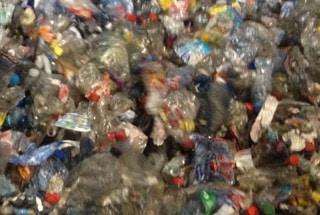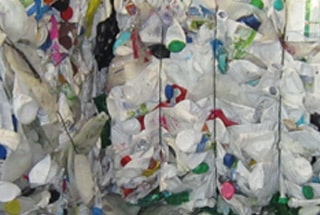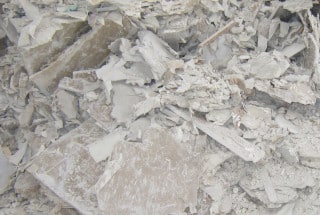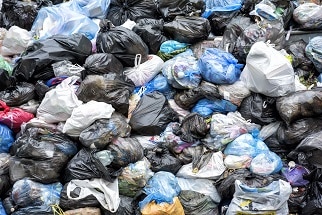A comprehensive look at plasterboard: Materials, lifecycle, and sustainability
Plasterboard is a critical component in modern construction, valued for its versatility, lightweight nature, and fire-resistant properties. However, its environmental footprint demands scrutiny. By understanding its composition and recognising the transformative potential of recycling and reuse, the construction industry can advance toward a more sustainable future.
Composition of plasterboard: Core elements with circular potential
- Gypsum: The structural foundation
Gypsum, a naturally occurring mineral, is the primary ingredient in plasterboard. Its unique attribute is its infinite recyclability—when processed, it retains its structural and chemical integrity. This means it can be repeatedly incorporated into new plasterboard without compromising quality. Gypsum’s adaptability makes it indispensable in construction, while its recyclability underscores its role in sustainable material management. - Paper: Strength with versatility
Encasing the gypsum core are layers of paper, often sourced from recycled materials. This paper enhances the plasterboard’s durability and provides a smooth surface for finishing. Like gypsum, the paper can be efficiently separated and repurposed during recycling, reinforcing the principles of a circular economy.
Why plasterboard recycling matters: Environmental, economic, and regulatory perspectives
Environmental impact: Reducing harm and conserving resources
- Mitigating landfill burden
Disposing of plasterboard in landfills poses significant environmental risks. The decomposition process produces harmful hydrogen sulfide gas, a contributor to air and soil pollution. Recycling plasterboard eliminates this risk, alleviating pressure on landfills and protecting ecosystems. - Reducing carbon emissions
Recycling gypsum is far less energy-intensive than extracting and processing raw materials. By lowering energy consumption, the plasterboard industry can contribute meaningfully to global climate goals, reducing greenhouse gas emissions and fostering a more sustainable production cycle. - Preserving natural resources
Recycled gypsum reduces reliance on virgin mineral deposits, decreasing the environmental impact of mining activities. This not only protects natural habitats but also promotes the responsible use of finite resources.
Economic advantages: Turning waste into value
- Lower production costs
Using recycled gypsum is more cost-effective than sourcing raw materials. These savings ripple through the value chain, benefiting manufacturers, contractors, and end consumers. - Avoidance of disposal fees
Recycling reduces the amount of waste directed to landfills, helping businesses sidestep rising landfill taxes and waste management fees. - Creation of new revenue streams
The recycling process yields high-quality gypsum and reusable paper. These by-products can be sold or reintegrated into production, transforming waste into profitable resources.
Regulatory and corporate responsibility: Adapting to a changing world
- Compliance with environmental regulations
In Europe and beyond, stringent waste management laws compel industries to adopt sustainable practices. Recycling plasterboard ensures adherence to these regulations while avoiding penalties and safeguarding corporate reputation. - Sustainability as a competitive advantage
Consumers and investors increasingly favour companies that prioritise environmental stewardship. Recycling plasterboard demonstrates a commitment to sustainability, bolstering a company’s brand and market appeal.
Enabling a circular economy: Closing the loop with innovation
A circular economy thrives on products designed for disassembly, reuse, and recycling. Plasterboard, with its simple composition, is uniquely suited to support these principles. By embracing design innovations and optimising recycling processes, the industry can maximise its contributions to a closed-loop economy.
- Designing for recyclability
Manufacturers are rethinking plasterboard design to simplify recycling. By focusing on separability and material recovery, they enhance the product’s lifecycle value while reducing waste. - Driving green construction
Incorporating recycled gypsum and paper into plasterboard aligns with the growing demand for eco-friendly building materials. This innovation supports sustainable architecture and fosters a culture of environmental responsibility in construction.
Technological leadership in plasterboard recycling: ACA Industry’s role
Advanced recycling technology is pivotal in transforming plasterboard waste into valuable resources. ACA Industry exemplifies leadership in this field, offering machinery tailored to optimise the recycling process.
- Efficiency and precision
ACA’s equipment achieves high recovery rates by separating gypsum and paper with minimal waste. This ensures the extracted materials are clean, uncontaminated, and ready for reuse. - Scalability and adaptability
ACA’s solutions cater to diverse industries, from construction to plastic recycling, providing tailored machinery that meets specific operational needs. - Sustainability through electrification
ACA’s machinery operates on electric power, reducing carbon emissions compared to diesel-powered alternatives. This shift supports clients in meeting sustainability goals and complying with emissions regulations.
The future of sustainable construction
Plasterboard recycling represents a crossroads of environmental stewardship, economic innovation, and regulatory compliance. By adopting recycling practices and leveraging advanced technology, the construction industry can transition toward a sustainable model that minimises waste, conserves resources, and meets the demands of a circular economy.
This transformation benefits all stakeholders:
- Manufacturers gain cost savings and competitive advantage.
- Consumers access high-quality, sustainable products.
- The planet reaps the rewards of reduced emissions and preserved resources.
As industry leaders like ACA Industry demonstrate, the path forward is clear: a commitment to innovation, sustainability, and the power of recycling can reshape the future of plasterboard production and beyond.


